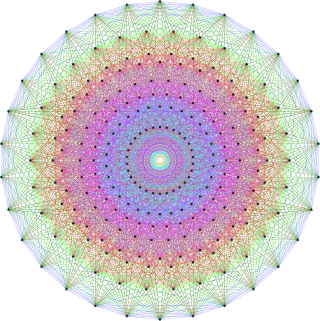Nilpotent Lie algebra
In mathematics, a Lie algebra is nilpotent if its lower central series terminates in the zero subalgebra. The lower central series is the sequence of subalgebras
| Lie groups |
|---|
 |
We write , and for all . If the lower central series eventually arrives at the zero subalgebra, then the Lie algebra is called nilpotent. The lower central series for Lie algebras is analogous to the lower central series in group theory, and nilpotent Lie algebras are analogs of nilpotent groups.
The nilpotent Lie algebras are precisely those that can be obtained from abelian Lie algebras, by successive central extensions.
Note that the definition means that, viewed as a non-associative non-unital algebra, a Lie algebra is nilpotent if it is nilpotent as an ideal.
Definition
Let be a Lie algebra. One says that is nilpotent if the lower central series terminates, i.e. if for some n ∈ ℕ.
Explicitly, this means that
so that adX1adX2 ⋅⋅⋅ adXn = 0.
Equivalent conditions
A very special consequence of (1) is that
Thus (adX)n = 0 for all . That is, adX is a nilpotent endomorphism in the usual sense of linear endomorphisms (rather than of Lie algebras). We call such an element x in ad-nilpotent.
Remarkably, if is finite dimensional, the apparently much weaker condition (2) is actually equivalent to (1), as stated by
- Engel's theorem: A finite dimensional Lie algebra is nilpotent if and only if all elements of are ad-nilpotent,
which we will not prove here.
A somewhat easier equivalent condition for the nilpotency of : is nilpotent if and only if is nilpotent (as a Lie algebra). To see this, first observe that (1) implies that is nilpotent, since the expansion of an (n − 1)-fold nested bracket will consist of terms of the form in (1). Conversely, one may write[1]
and since ad is a Lie algebra homomorphism,
If is nilpotent, the last expression is zero for large enough n, and accordingly the first. But this implies (1), so is nilpotent.
Also, a finite-dimensional Lie algebra is nilpotent if and only if there exists a descending chain of ideals such that .[2]
Examples
Strictly upper triangular matrices
If is the set of k × k matrices with entries in ℝ, then the subalgebra consisting of strictly upper triangular matrices is a nilpotent Lie algebra.
Heisenberg algebras
A Heisenberg algebra is nilpotent. For example, in dimension 3, the commutator of two matrices
where .
Cartan subalgebras
A Cartan subalgebra of a Lie algebra is nilpotent and self-normalizing[3] page 80. The self-normalizing condition is equivalent to being the normalizer of a Lie algebra. This means . This includes upper triangular matrices and all diagonal matrices in .
Other examples
If a Lie algebra has an automorphism of prime period with no fixed points except at 0, then is nilpotent.[4]
Properties
Nilpotent Lie algebras are solvable
Every nilpotent Lie algebra is solvable. This is useful in proving the solvability of a Lie algebra since, in practice, it is usually easier to prove nilpotency (when it holds!) rather than solvability. However, in general, the converse of this property is false. For example, the subalgebra of (k ≥ 2) consisting of upper triangular matrices, , is solvable but not nilpotent.
Subalgebras and images
If a Lie algebra is nilpotent, then all subalgebras and homomorphic images are nilpotent.
Nilpotency of the quotient by the center
If the quotient algebra , where is the center of , is nilpotent, then so is . This is to say that a central extension of a nilpotent Lie algebra by a nilpotent Lie algebra is nilpotent.
Engel's theorem
Engel's theorem: A finite dimensional Lie algebra is nilpotent if and only if all elements of are ad-nilpotent.
Zero Killing form
The Killing form of a nilpotent Lie algebra is 0.
Have outer autormophisms
A nilpotent Lie algebra has an outer automorphism, that is, an automorphism that is not in the image of Ad.
Derived subalgebras of solvable Lie algebras
The derived subalgebra of a finite dimensional solvable Lie algebra over a field of characteristic 0 is nilpotent.
See also
Notes
- Knapp 2002 Proposition 1.32.
- Serre, Ch. I, Proposition 1.
- Humphreys, James E. (1972). Introduction to Lie Algebras and Representation Theory. New York, NY: Springer New York. ISBN 978-1-4612-6398-2. OCLC 852791600.
- Jacobson, N. (1989), Jacobson, Nathan (ed.), "A Note on Automorphisms and Derivations of Lie Algebras", Nathan Jacobson Collected Mathematical Papers: Volume 2 (1947–1965), Contemporary Mathematicians, Birkhäuser, pp. 251–253, doi:10.1007/978-1-4612-3694-8_16, ISBN 978-1-4612-3694-8
References
- Fulton, W.; Harris, J. (1991). Representation theory. A first course. Graduate Texts in Mathematics. 129. New York: Springer-Verlag. ISBN 978-0-387-97527-6. MR 1153249.CS1 maint: ref=harv (link)
- Humphreys, James E. (1972). Introduction to Lie Algebras and Representation Theory. Graduate Texts in Mathematics. 9. New York: Springer-Verlag. ISBN 0-387-90053-5.CS1 maint: ref=harv (link)
- Knapp, A. W. (2002). Lie groups beyond an introduction. Progress in Mathematics. 120 (2nd ed.). Boston·Basel·Berlin: Birkhäuser. ISBN 0-8176-4259-5.CS1 maint: ref=harv (link)
- Serre, Jean-Pierre (2000), Algèbres de Lie semi-simples complexes [Complex Semisimple Lie Algebras], translated by Jones, G. A., Springer, ISBN 978-3-540-67827-4.